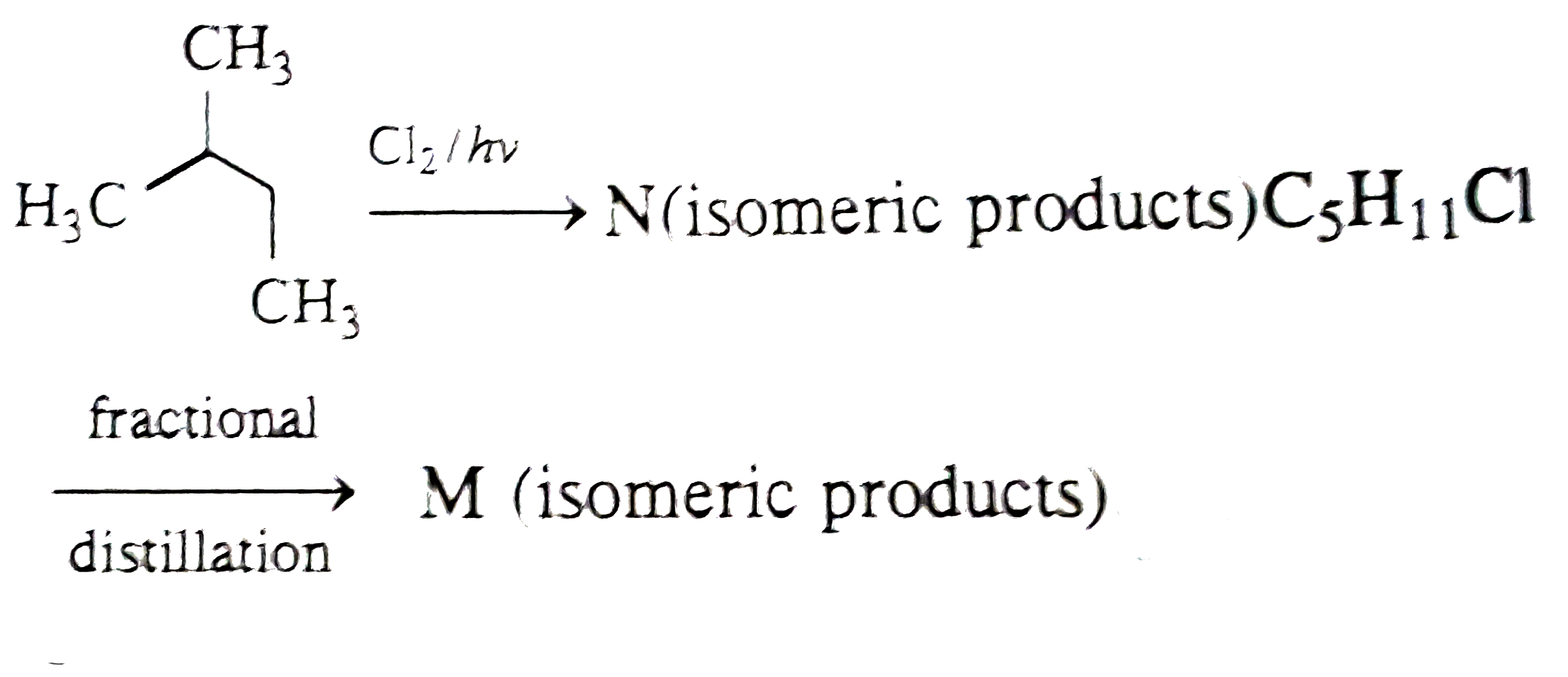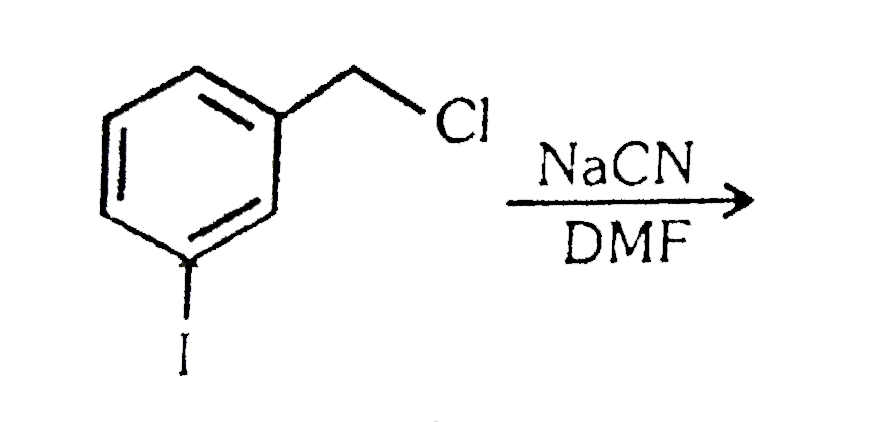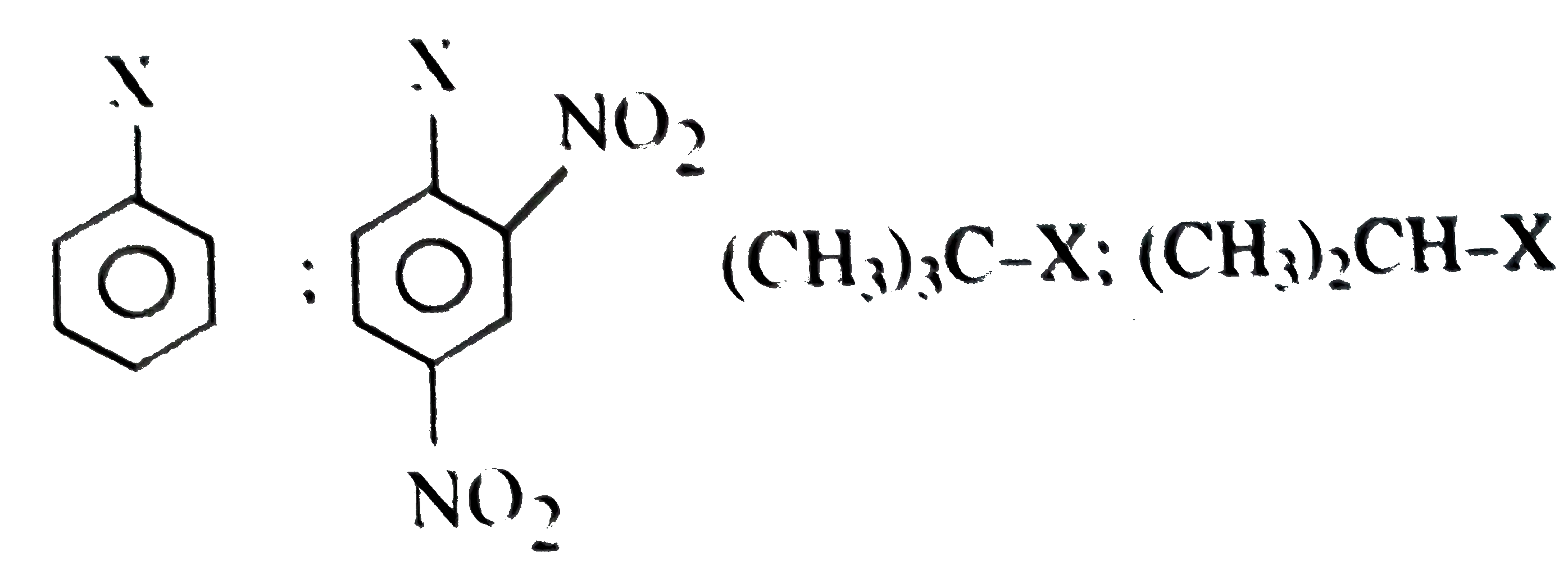Complete Solutions to Selected Straight Objective Type MCQs of chapter ORGANIC COMPOUNDS WITH FUNCTIONAL GROUP CONTAINING HALOGENS of Class 12 book with complete answers and questions
| Class 12 | CHEMISTRY |
| Chapter | ORGANIC COMPOUNDS WITH FUNCTIONAL GROUP CONTAINING HALOGENS |
| DINESH OBJECTIVE CHEMISTRY | Selected Straight Objective Type MCQs |
| Number Of Questions | 78 |
| Academic Year | 2023-24 |
`C_(7)H_(7)Cl overset((i)KMnO_(4))underset((ii)"Soda-lime/"Delta)rarr` Chlorobenzene. In this sequence, the starting compound can be
View Solution`A overset(I_(2)//NaOH)rarr` Iodoform + Sod. Succinate In the above sequence A can be
View Solution
In the reaction the major product (s) formed is (are) ,
View SolutionWhich of the following reagents/tests cannot be used to distinguish allyl bromide from n-propyl bromide
View SolutionWhich of the following substance on treatment with `NaNH_(2)` in liquid `NH_(3)` gives m-anisidine
View SolutionOnly two isomeric monochloro derivatives are possible for
View SolutionDipole moment is shown by :
View SolutionAryl halides are less reactive towards nucleophilic substitution reaction as compared to alkyl halides due to
View SolutionThe compound(s ) used as refrigerant are
View SolutionThe product of the reaction of alcoholic silver nitrite with ethyl bromide is:
View SolutionWhich of the following ketone will not give yellow precipitate with `NaOH//I_(2)` ?
View SolutionBenzylchloride `(C_(6)H_(5)CH_(2)Cl)` can be prepared from toluene by chlorination with :
View SolutionToluene when treated with `Br_(2)//Fe`, gives p-bromotoluene as the major product because the methyl group
View SolutionAnti-Markownikoff's addition of HBr is not observed in-
View SolutionThe reaction of toluene with chlorine in the presence of ferric chloride gives mainly
View SolutionThe reaction conditions leading to the best yield of `C_(2)H_(5)Cl` are :
View Solutionn-Propyl bromide on treatment with ethanolic potassium hydroxide produces :
View SolutionOf the following compounds, which will have a zero dipole moment ?
View SolutionWhich of the following will have least hindered rotation about carbon-carbon bond?
View SolutionThe number of structural and configurational isomers of a bromo compound, `C_5H_9Br`, formed by the addition of `HBr` to 2-pentyne respectively, is:
View SolutionThe `CI - C - CI` angle in `1, 1, 2, 2`, tetrachloroethone and tetrachloromethane respectively will be about:
View SolutionThe C-H bond distance is the longest in:
View SolutionChlorination of toluene in the presence of light and heat followed by treatment with aqueous `NaOH` gives
View SolutionA mixture of 1-chlorobutane and 2-chlorobutane when treated with alcoholic KOH gives:
View SolutionButanenitrile may be prepared by heating
View SolutionIn the adddition of `HBr` to propene in the absence of peroxides, the first step involves the addition of-s
View SolutionArrange the following compounds in order of increasing dipole moment .
Toluene `(I)` m-dichlorobenzene `(II)`
o-dichlorobenzene `(III)` . P-dichlorobenzene `(IV)` .
View SolutionThe intermediate during the addition of `HCl` to propene in the presence of peroxide is :
View SolutionThe number of possibel enanntiomer pairs that can be produced during monochlorination of `2-`methylbutane is `:`
View SolutionDuring debromination of meso-dibromobutane, the major compound formed is :
View SolutionIn the reaction of p-chlorotoluene with `KNH_(2)` in liguid `NH_(3)`, the major product is .
View Solution`(CH_(3))_(3)-C-MgCl` on reaction with `D_(2)O` produces
View SolutionWhich of the following will react with water?
View SolutionA solution of `(+)`-2-chloro-2-phenyl ethane in toluene racemises slowly in the presence of small amount of `SbCl_(5)`, due to the formation of:
View SolutionThe order of reactivities of the following alkyl halides for a `S_(N^(2))` reaction is :
View SolutionWhich of the following has the highest nucleophilicity ?
View SolutionThe reaction of propene with HOCl proceeds via the addition of :
View SolutionAs `S_N2` reaction at an asymmetric carbon of a compound always gives:
View SolutionThe number of isomers for the compound with molecular formula `C_(2)BrClFI` is
View SolutionIn the presence of peroxide, hydrogen chloride and hydrogen iodide do not give anti-Markovnikov's addition to alkenes because:
View SolutionIdentify the set of reagents `//` reaction conditions `'X'` and `'Y'` in the following set of transformations.
`CH_(3)-CH_(2)CH_(2)Br overset(X)rarr P r od uct overset(Y)rarr`

View SolutionConsider the following reaction :
`H_(3)C-underset(D)underset(|)(C )H-underset(CH_(3))underset("| ")("C ")H-CH_(3)+Br^(•)rarr 'X'+HBr` Identify the structure of the major product 'X'
View SolutionAmong the following, the molecule with the highest dipole moment is :
View Solution
View SolutionHow many chiral compounds are possible on monochlorination of 2-Methyl butane ?
View SolutionThe major product obtained when `Br_2"/"Fe` is treated with

View SolutionHow will you convert butan -2-one to propanoic acid?
View SolutionThe correct order of nucleophilicity among the following is:
`(I) CH_(3)-underset(O)underset(||)C-O^(-)`
(II) `CH_(3)O^(-)`
(III) `CN^(-)`
(iv)
View SolutionAmong the following, the strongest nucleophile is:
View SolutionThe major product formed in the following reation is
`CH_(3)-underset(H)underset(|)overset(CH_(3))overset(|)C-CH_(2)-Br underset(CH_(3)OH)overset(CH_(3)ONa)rarr` .
View SolutionThe major product obtained on treatment of `CH_(3)CH_(2)CH(F) CH_(3) " with " CH_(3)O^(-)//CH_(3)OH` is :
View Solution
Given the number of N and M
View SolutionWhich of the following sequence of reaction (reagents) can be used for conversion of `C_(6)H_(5)CH_(2)CH_(3)` into `C_(6)H_(5)CH=CH_(2)` ?
View SolutionThe major product obtained on monobromination (with `Br_(2)//FeBr_(3)`) of the following compound A is

View SolutionWhich of the following compounds has the highest boiling point ?
View SolutionThe correct increasing order of the reactivity of halides for `S_(N^(1))` reaction is:
View Solutionthe major product in the following reaction is : `CH_(3)CH(Cl)CH_(2)CH_(2)OH overset(KOH (aq))(rarr)`
View Solution`HBr` reacts with `CH_(2)=CH-OCH_(3)` under anhydrous conditions at room temperature to give:
View SolutionThe IUPAC name of the compound shown below

View Solution`CH_(3)Br+Nu^(-)rarrCH_(3)Nu+Br^(-)`
The decreasing order of the rate of the above reaction with nucleophiles `(Nu^(-))` A to D is :
`[Nu^(-)=(A)PhO^(-),(B)AcO^(-),(C)HO^(-),(D)CH_(3)O^(-)]`
View SolutionFluorobenzene `(C_(6)H_(5)F)` can be synthesized in the laboratory .
View SolutionThe structure of the major product formed in the following reaction is:

View SolutionTrans-2-phenyl-1-bromocyclopentane on reaction with alcoholic KOH produces
View SolutionWhich of the following is not chiral?
View SolutionThe number of stereoisomers obtained by bromination of trans-2-butene is :
View SolutionThe reagents for the following conversion is/are

View SolutionPredict the product C obtained in the following reaction of butyne-1.
`CH_(3)CH_(2)C-=CH+HCl rarr B overset(HI)rarr C`
View SolutionFor the following
`(i) I^(-) (ii) Cl^(-) (iii) Br^(-)`
the increasing order of nucleophilicity would be:
View SolutionThe reaction of toluene with `CI_(2)` in presence of `FeCI_(3)` gives predominantly
View SolutionWhich of the following is the correct order of decreasing `S_(N^(2))` reactivity ?
View SolutionIn a `S_(N)2` substitution reaction of the type
`R-Br+Cl^(-) overset("DMF")toR-Cl+Br^(+)`
which one of the following has the highest relative rate?
View Solution`H_(3)C-underset(CH_(3))underset(|)(CH)-CH=CH_(2)+HBr to A`.
A is predominantly
View SolutionHow many stereoisomerse does this molecule has?
`CH_(3)CH=CHCH_(2)CHBrCH_(3)`
View SolutionThe organic chloro compound, which shows complete stereochemical inversion during a `S_(N)^(2)` reaction, is:
View SolutionThe major product of the following reaction is

View SolutionWhat would be the produt formed when 1-bromo-3 chorocyclobutane reacts with two equivalents of metallic sodium in ether ? .
View SolutionWhich one is most reactive towards `S_(N^(1))` reaction?
View SolutionThe correct order of increasing reactivity of C-X bond towards nucleophile in the following compounds is :

View Solution
Selected Straight Objective Type MCQs questions and complete solutions for chapter ORGANIC COMPOUNDS WITH FUNCTIONAL GROUP CONTAINING HALOGENS of S DINESH & CO CHEMISTRY (HINGLISH) of Class 12